Exploring Modern Interiors: A Comprehensive Guide
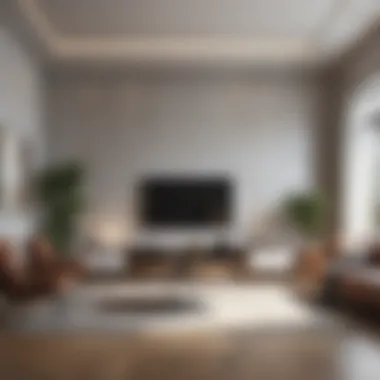
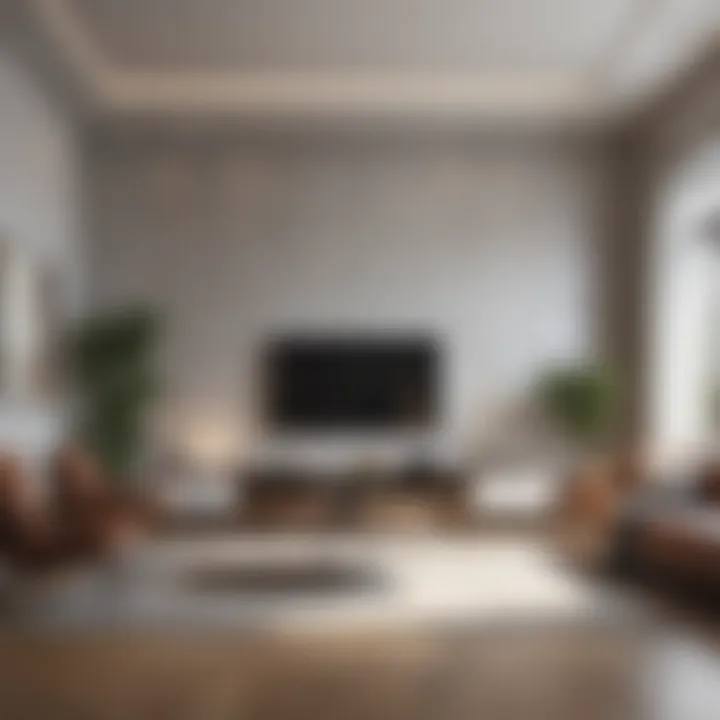
Intro
Modern interiors reflect a blend of innovation and personal expression. Homeowners today seek spaces that are not only aesthetically pleasing but also functional and sustainable. This comprehensive guide aims to explore various aspects of modern interior design, such as current trends, colors, and the importance of personal touches. The evolving nature of design necessitates an understanding of how it complements lifestyle choices and habits.
As we delve deeper, we will discuss practical tips for creating stylish environments. Engaging with concepts of sustainability and innovative materials will be a crucial part of our journey. With the right insights, anyone can refine their living spaces to reflect their unique tastes and values.
Design Inspiration
Current Trends in Interior Design
The realm of interior design is constantly changing. Current trends encompass minimalism, eco-friendliness, and a focus on multi-functional spaces. Open floor plans remain popular, promoting fluidity in movement and interaction.
As more people work from home, designing versatile workspaces has gained importance. This includes integrating technology seamlessly into home settings. Textures also play a vital role. Soft fabrics and natural materials contribute to warmth and comfort.
Key Trends to Consider:
- Sustainable Practices: Use of recycled materials is on the rise.
- Bold Statements: Unique furniture pieces that serve as conversation starters.
- Smart Homes: Incorporation of smart devices for efficiency and convenience.
Color Schemes and Palette Ideas
Colors significantly influence the mood of a space. Neutral tones remain popular for their versatility but do not overlook bold colors for accent walls or decor.
The balance between cool and warm hues can create harmony. Mixing different shades can personalize a space. When choosing colors, consider their psychological effects. For instance, blue promotes calmness while yellow energizes.
Suggested Color Palettes:
- Soft Neutrals: Beige, ivory, and soft grays.
- Earthy Tones: Terracotta, olive green, and deep browns.
- Pastel Shades: Light pink, mint green, and baby blue.
"A well-chosen color can instantly uplift a space and alter perceptions."
In modern interiors, the focus is on personal expression through design. Understanding trends and color theory can lead to more satisfying and meaningful environments. With mindful choices, anyone can create spaces that not only look good but feel good too.
Intro to Modern Interiors
The topic of modern interiors holds substantial significance in the realm of interior design. As life transforms rapidly, so do the spaces in which we exist. Modern interior design focuses on functionality intertwined with aesthetics, reflecting the evolving preferences of homeowners. This article explores essential elements, trends, and practices that define modern interiors, enabling readers to create spaces that resonate with their personalities while ensuring practicality.
Understanding Modern Interior Design
Modern interior design is characterized by its clean lines, minimalism, and emphasis on open spaces. This approach encourages uncluttered environments, allowing for a focus on the essentials. Key principles include the importance of light, the use of color, and selecting furnishings that serve a dual purpose in function and decoration. The aesthetic often leans towards simplicity, which speaks to the growing complexity of the lives people lead.
Color plays a pivotal role in modern design. Neutral shades—such as whites, grays, and beiges—create a calming backdrop. They allow for accents through furniture, accessories, or art pieces without overwhelming the senses. The merging of colors is done thoughtfully, aimed at fostering harmony within living spaces.
Moreover, understanding modern interior design means recognizing its responsiveness to contemporary lifestyles. As work-from-home arrangements become more commonplace, designers integrate workspaces into home layouts. This evolution compels design enthusiasts to rethink their spaces to enhance comfort and productivity.
The Impact of Technology on Design
The influence of technology on modern interior design cannot be understated. The integration of smart home technologies has redefined how spaces are utilized. Innovations, such as automated lighting and climate control, not only serve functional needs but also enhance energy efficiency, aligning with sustainable practices.
Furthermore, technology facilitates a seamless experience for homeowners. Smart speakers, robotic vacuum cleaners, and security systems can now be managed via mobile applications, placing convenience at the forefront of living. These changes encourage a blend of art and technology, where design is tailored more closely to individual needs.
Technology also empowers designers through advanced visualization tools. Programs allow designers to create 3D models of spaces, helping homeowners to visualize finished projects before the actual work begins. This reduces the risk of costly mistakes and fosters better communication between clients and designers.
"Modern design is not just an aesthetic; it's a lifestyle choice that adapts to evolving human needs."
Understanding these dynamics will help homeowners and interior enthusiasts alike embrace the possibilities offered by modern interiors. In the subsequent sections, we will delve into the key characteristics, current trends, and essential elements that compose modern interior design.
Key Characteristics of Modern Interiors
Modern interior design is defined by several key characteristics that not only enhance the aesthetic appeal of spaces but also prioritize functionality and comfort. Understanding these elements is crucial for anyone looking to create a modern home or redesign an existing space. The principles of modern interiors focus on simplicity, neutral palettes, and open space concepts, which contribute to a harmonious environment. These characteristics serve as a guide for both professionals and homeowners seeking to enhance their living environments.
Simplicity and Functionality
At the core of modern interior design is a commitment to simplicity. This principle dictates that spaces should be uncluttered and devoid of unnecessary ornamentation. Functional furniture and decor elements take precedence, ensuring each item serves a purpose while contributing to the overall aesthetic. Modern interiors typically feature clean lines and geometric shapes, which create an inviting and organized appearance.
Furthermore, simplicity promotes ease of maintenance, making it practical for busy homeowners. By focusing on fewer, more impactful pieces, one can achieve a cohesive look without the chaos often associated with traditional designs.
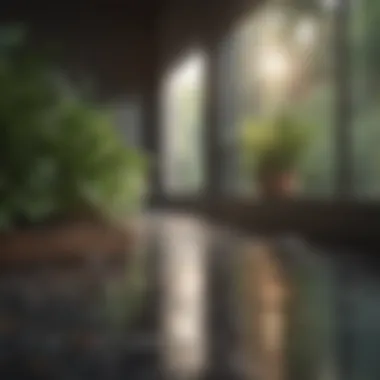
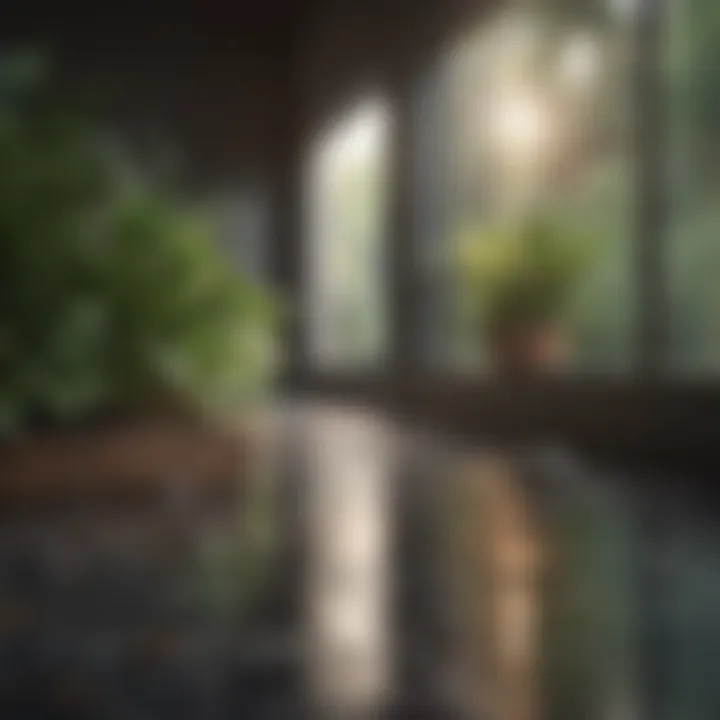
Neutral Color Palettes
Another vital characteristic of modern interiors is the use of neutral color palettes. Shades of white, gray, beige, and earthy tones dominate contemporary spaces. These colors offer versatility and serve as a backdrop for various design elements. The subtlety of neutral tones can complement the natural light in a room, maximizing the feeling of space and openness.
Utilizing a neutral palette allows for easy integration of bolder accents, such as colorful art or vibrant furniture pieces, which can be introduced to add personality without overwhelming the overall aesthetic.
Open Space Concepts
Open space concepts characterize many modern interiors, breaking free from the confines of traditional room designs. This design approach encourages a seamless flow between areas, promoting interaction and functionality. Spaces become multi-use, allowing for various activities to occur without barriers.
An open layout not only enhances communication but can also make smaller areas seem larger and more inviting. It facilitates creativity in furniture placement and offers opportunities to infuse personal style into the design without the constraints of segmented spaces.
"Modern interior design is not merely about aesthetics; it is about creating spaces that resonate with how we live today."
In summary, the key characteristics of modern interiors—simplicity and functionality, neutral color palettes, and open space concepts—are essential for creating thoughtful, engaging environments. By embracing these principles, individuals can design spaces that are both stylish and practical, reflecting contemporary lifestyles.
Current Trends in Modern Interior Design
In the fast-evolving world of interior design, staying relevant means constantly adapting to new styles and philosophies. The topic of current trends in modern interior design holds significant importance in this article because it sheds light on how design reflects societal changes. Understanding these trends helps homeowners and design enthusiasts create spaces that not only look appealing but also function efficiently in today's lifestyle.
Today's trends focus on sustainability, functionality, and the connection to nature. They provide insight into how to merge aesthetic appeal with the requirements of a modern life, encouraging thoughtful design choices that enhance well-being and adaptability. Each trend works together to create a cohesive environment that resonates with homeowners’ values and lifestyles.
Biophilic Design Elements
Biophilic design integrates natural elements into interior spaces. This concept stems from the human desire to connect with nature, even in urban environments. Incorporating biophilic elements can include adding plants, using natural materials, and maximizing natural light.
Benefits of biophilic design are numerous:
- Increased Well-being: Exposure to nature has been linked to reduced stress and improved mood.
- Enhanced Creativity: Natural elements stimulate creativity and productivity, making spaces more functional.
- Aesthetic Appeal: Nature-inspired designs often look visually appealing.
Consider practical ways to bring biophilic aspects into your home:
- Use indoor plants to improve air quality and aesthetics.
- Opt for materials like wood, stone, and bamboo in furniture and decor.
- Arrange windows to draw in natural light, making spaces feel larger and more inviting.
Sustainable Materials and Practices
Sustainability is no longer a niche trend but a fundamental principle in modern interior design. Awareness of environmental issues compels designers and homeowners to seek eco-friendly materials and practices. Choosing sustainable options supports better health for occupants and conservation of resources.
Sustainable materials include:
- Recycled metal and glass: These materials minimize waste and energy use in production.
- Reclaimed wood: Provides character while reducing deforestation.
- Low-VOC paints: Improve indoor air quality and reduce harmful emissions.
Practices can include:
- Implementing energy-efficient lighting and appliances, which lowers energy consumption.
- Using sustainable flooring options, such as cork or bamboo.
- Prioritizing water-saving fixtures in kitchens and bathrooms.
"Adopting sustainable practices in interior design contributes positively to the environment while ensuring a healthier living space for occupants."
Multi-Functional Spaces
The demand for multi-functional spaces arises from urban living conditions where space is often limited. The modern homeowner seeks versatility in design, allowing areas to serve more than one purpose. This trend reflects the need for efficiency, particularly in small apartments or homes where maximizing space is paramount.
Key considerations for creating multifunctional spaces include:
- Foldable furniture: Such as Murphy beds or extendable dining tables, which enhance usability without sacrificing style.
- Zoning techniques: Using rugs or furniture arrangements to define different areas within one room.
- Technology integration: Smart solutions that enhance functionality, such as projector screens that replace bulky televisions.
Ultimately, the trend of multi-functional spaces speaks to the practicality in modern living.
Essential Elements of Modern Interiors
The realm of modern interiors revolves around distinct elements that shape its essence. Understanding these crucial components is fundamental for anyone looking to curate stylish and functional spaces. This section will elaborate on furniture, lighting, and art, offering insights into their significance in creating modern environments.
Furniture Selection and Placement
Selecting the right furniture is perhaps the most critical aspect of modern interior design. Furniture should not only serve a purpose but also reflect a clean aesthetic. When choosing pieces, consider their scale and how they align with the dimensions of your space. Lightweight materials often work better, as they promote an airy feel.
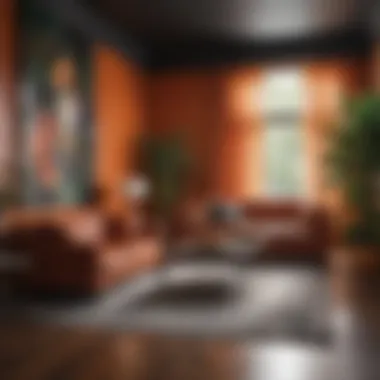
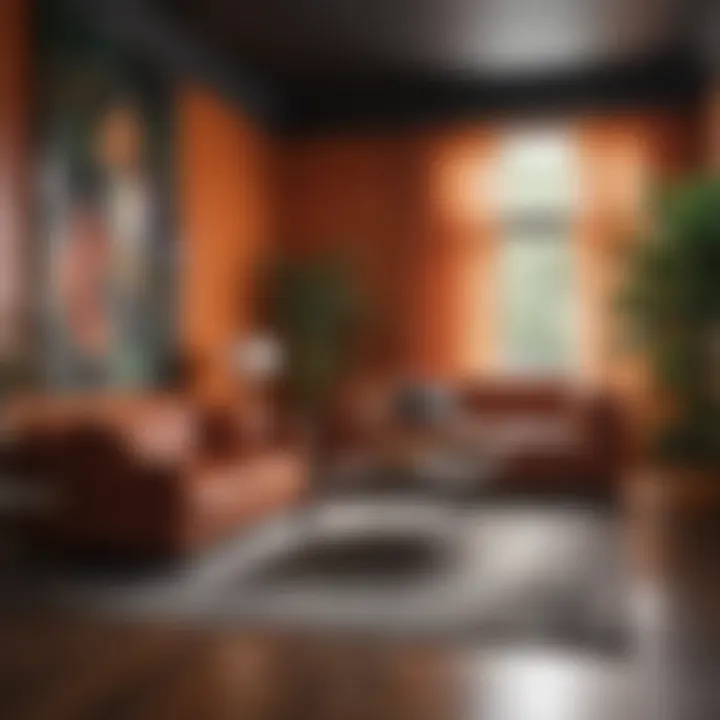
Placement plays a critical role as well. Arrange furniture to promote flow and functionality. Consider the focal point of the room, such as a fireplace or TV, and position seating accordingly to encourage interaction. It's also helpful to leave pathways clear, ensuring ease of movement.
Lighting as a Design Feature
Lighting extends beyond mere illumination; it acts as a determining factor in creating ambiance. In modern design, consider layered lighting, which combines ambient, task, and accent options to enhance mood and function.
For instance, pendant lighting above dining areas serves not only a practical purpose but becomes a striking design element. Likewise, wall sconces can highlight artwork or architectural features. Natural light should also not be overlooked. Large windows or skylights effectively merge indoor and outdoor spaces, providing dynamic illumination throughout the day.
Art and Accessories
Art introduces personality into modern interiors and should be thoughtfully curated. Choose pieces that resonate with your style and contribute to the overall theme of the room.
Rather than overcrowding walls, select a few statement pieces that catch the eye and enhance the space. Accessories such as throw pillows, vases, or decorative objects can add warmth and depth. However, they should complement rather than clutter. Incorporating natural elements, like plants or wood accents, can soften the modern feel, fostering a balanced environment.
"The importance of balance in modern interiors cannot be understated; achieving harmony between furniture, lighting, and art is essential."
Incorporating Personal Style
In the realm of modern interiors, incorporating personal style transcends mere decoration; it is about creating a space that resonates with individual identities and values. This integration serves multiple purposes: it enhances comfort, promotes a sense of belonging, and reflects the unique narrative of the inhabitants. Understanding personal style is crucial, especially in a world saturated with design options and trends that frequently shift. The importance of recognizing one’s aesthetic is paramount when navigating the complexities of modern interior design.
Finding Your Design Aesthetic
To effectively incorporate personal style, one must first identify their design aesthetic. This involves assessing preferences regarding colors, textures, and layouts. You can start by seeking inspiration from various sources such as magazines, websites like Pinterest, or social media platforms. Consider creating a mood board; it allows for a visual collection of ideas that align closely with your tastes.
Reflecting on personal experiences and aspirations can help in this process. Ask yourself:
- What spaces make you feel comfortable?
- Which colors invoke positive emotions?
- Are there particular cultural influences that inspire you?
Ultimately, recognizing your design aesthetic can help streamline decisions regarding furnishings and decor, ensuring a cohesive outcome.
Mixing and Matching Styles
Once you have identified your aesthetic, the next step is the art of mixing and matching styles. This is a powerful technique that can lead to delightful interior compositions, reflecting both personal flair and creativity. The key lies in maintaining balance. To achieve this:
- Establish a Focal Point: Choose a central item that resonates strongly with you. This could be a piece of art, a unique light fixture, or a statement sofa.
- Stick to a Color Palette: While incorporating diverse styles, ensure that there is a unifying color scheme that ties everything together. This maintains harmony in the space.
- Play with Textures: Combining different materials can enhance the sensory experience of a room. Mix smooth surfaces with rough textures for an interesting contrast.
While mixing styles, it’s essential to remain mindful of proportion and scale. Ensure that furniture and decor pieces complement each other visually while celebrating their differences.
"Design is not just what it looks like and feels like. Design is how it works." — Steve Jobs
Incorporating personal style is not merely an aesthetic pursuit; it is an exploration of self within a designed environment. When done thoughtfully, it encourages a deeper connection to one’s living space, creating an inviting ambiance that tells your story.
Challenges in Modern Interior Design
The world of modern interior design is both exciting and complex. While it offers numerous opportunities for creativity and personal expression, there are also significant challenges that designers and homeowners face. This section focuses on understanding these hurdles, specifically related to budget constraints and adapting to changing trends.
Budget Constraints
Managing finances is a critical aspect of any design project. Budget constraints can limit the scope of work and influence design choices. Whether it is choosing materials, furnishings, or hiring professionals, costs can add up quickly. When planning, it is essential to set a realistic budget that accommodates both aesthetic desires and practical needs. Some important points to consider include:
- Prioritize Spending: Determine which areas of the home require the most attention. Invest more in essential rooms like the kitchen or living area, while considering cost-saving measures in less critical spaces.
- Explore Alternative Materials: Look for eco-friendly and budget-friendly materials that can mimic the look of more expensive options. For example, laminates can replicate the appearance of natural wood at a fraction of the cost.
- DIY Options: Consider taking on some tasks yourself. Simple updates, like painting walls or reupholstering furniture, can lead to significant savings.
- Professional Assistance: While it may be tempting to cut costs, hiring an experienced designer can save money in the long run by avoiding costly mistakes.
These strategies can help navigate budget constraints effectively, ensuring that your vision for a modern interior remains intact.
Adapting to Changing Trends
Adapting to changing trends in interior design can be both a challenge and an opportunity. The interior design landscape evolves continuously due to societal influences, technological advances, and cultural shifts. To stay relevant, homeowners and designers must remain aware of these shifts while also staying true to their unique aesthetic preferences. Some considerations include:
- Follow Reliable Sources: Regularly consult reputable design blogs, magazines, and platforms like Reddit or Facebook for the latest trends and insights.
- Balance Trends with Timelessness: Combining trendy elements with classic design ensures longevity. Aim to incorporate a few trendy pieces while maintaining a foundation of timeless styles to avoid frequent overhauls.
- Flexible Design: Embrace designs that allow for easy updates. Modular furniture or interchangeable decor can quickly adapt to shifts in taste without significant costs.
By staying informed and adaptable, one can better navigate the challenges posed by changing trends.
"The best designs evolve with time while still reflecting the personality of the person living in the space."
In summary, challenges such as budget constraints and adapting to changing trends are critical considerations in modern interior design. Navigating these effectively can lead to spaces that are not only beautiful but also enjoyable to live in.
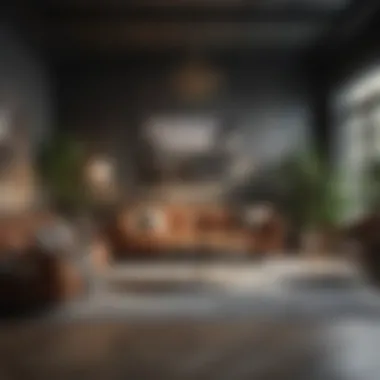
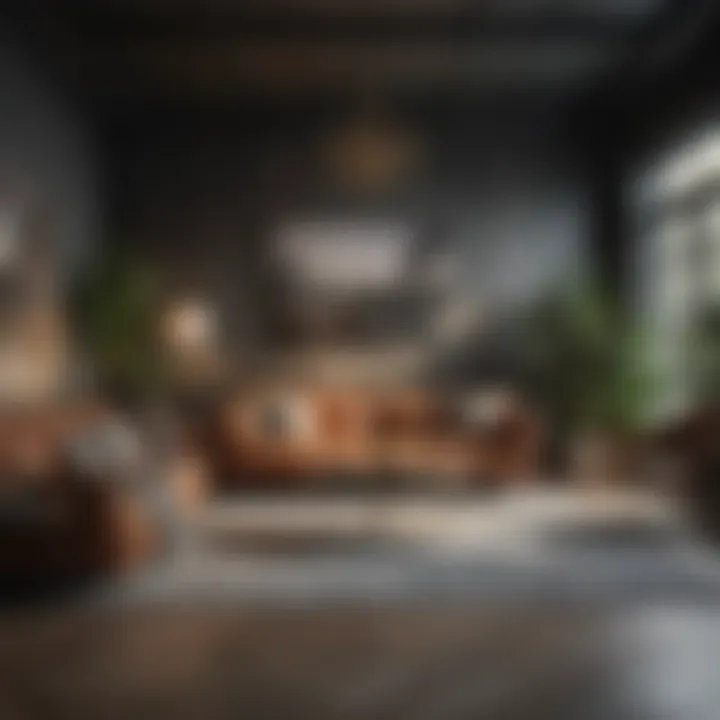
The Role of Technology in Modern Interior Design
The integration of technology in modern interior design has transformed how spaces are envisioned and utilized. Technology plays a pivotal role in shaping contemporary spaces, enhancing functionality, and promoting sustainability. Homeowners and designers alike see technology not merely as an addition but as a fundamental aspect of creating modern interiors that meet today’s demands.
Understanding this role is essential for anyone interested in interior design. The fusion of aesthetics with technological advancements results in spaces that are not only visually striking but also optimized for comfort and efficiency. Today, it is common to find homes equipped with smart devices, automated systems, and design software that simplifies the selection and arrangement of various elements.
Smart Home Integration
Smart home integration is a significant trend in modern interiors. This concept involves using devices that enhance control over various home functions, such as lighting, temperature, and even security systems. The advantage of smart home technology is its ability to increase convenience and efficiency while also adding a layer of sophistication to interior spaces.
- Convenience: With smart devices, tasks can be managed remotely or automated entirely. For instance, programmable thermostats allow users to adjust temperatures from their phones, ensuring comfort while saving energy.
- Efficiency: Many smart appliances are designed to minimize energy use. Energy-efficient lighting, such as LED bulbs connected to smart hubs, can be adjusted based on the time of day, greatly reducing overall consumption.
- Enhanced Security: Smart security systems provide real-time monitoring and alerts, which can be integrated seamlessly into the design, eliminating the need for bulky hardware.
Incorporating these technologies requires careful planning to ensure they fit seamlessly into the overall design. Designers must consider aesthetics while selecting devices that blend well with the interior, thus retaining a sense of harmony. It is clear that smart home integration is more than a trend; it represents an ongoing evolution in how we interact with our living spaces.
Virtual Design Tools
Virtual design tools have revolutionized the process of creating and visualizing interior spaces. With advancements in software and apps, designers and homeowners can experiment with layouts, colors, and furniture arrangements before making any commitments. This shift brings several notable benefits:
- Visualization: 3D modeling software allows users to see their spaces in a virtual environment. This feature helps in understanding how different elements will look together without the risks associated with physical changes.
- Cost-Effectiveness: By using virtual tools, mistakes in buying or arranging elements can be minimized. Homeowners save money by trying various configurations digitally before making decisions.
- Collaboration: Virtual design tools facilitate collaboration between homeowners and designers. Through shared platforms, feedback can be exchanged more freely, allowing for quicker and more efficient design processes.
In summary, the role of technology in modern interior design continues to grow as innovations emerge. Aligning technological capabilities with design goals is imperative. As our lifestyles evolve, so will our expectations for our living environments, and technology will remain at the forefront of this journey.
As technology shapes the possibilities of interior design, embracing these advancements becomes essential for anyone seeking to create contemporary, functional spaces.
Sustainable Practices in Interior Design
In today's world, the integration of sustainable practices within interior design is more crucial than ever. This topic does not simply reflect a trend but signifies a shift towards environmentally responsible choices that impact future generations. Emphasizing sustainability in interior spaces means considering the lifecycle of materials, energy usage, and overall ecological footprint. This article seeks to delve into two pivotal aspects of sustainable practices: the use of eco-friendly materials and energy-efficient solutions.
Eco-Friendly Materials
The use of eco-friendly materials is foundational to sustainable interior design. Such materials are typically sourced from renewable resources, reduce waste, and often have a lower carbon footprint. When selecting materials for a project, consider the following:
- Recycled content: Materials such as reclaimed wood, recycled metal, or glass not only minimize waste but also lend a unique charm to the design.
- Sustainable sourcing: Products that are harvested responsibly, like bamboo or cork, can be excellent choices because they regenerate quickly.
- Low-VOC products: Paints, finishes, and adhesives that emit lower amounts of volatile organic compounds contribute to healthier indoor air quality.
Benefits of using eco-friendly materials include:
- Reduced environmental impact,
- Enhanced indoor air quality,
- Greater durability and longevity of products.
"The smallest change can have the biggest positive effect."
Energy Efficient Solutions
Energy efficiency is a fundamental aspect of sustainable interior design. Implementing energy-efficient solutions not only helps in reducing utility bills but also promotes a more conscious use of resources. Some effective strategies include:
- Natural lighting: Maximizing natural light through the placement of windows, skylights, or using reflective surfaces can significantly cut down on energy use.
- Smart home technology: Integrating smart systems for lighting, heating, and cooling can optimize energy consumption. For instance, smart thermostats learn user habits and adjust accordingly, ensuring comfort while reducing waste.
- Energy-efficient appliances: Selecting appliances with high Energy Star ratings is crucial. These devices consume less energy while providing the same level of performance you would expect from conventional options.
By embracing these energy-efficient solutions, homeowners and designers can contribute to a sustainable living environment. Sustainability in interior design is not just about aesthetic choices but signifies a commitment to responsible living, merging beauty with ecological integrity.
Finale: The Future of Modern Interiors
As we look ahead, it is evident that modern interiors will continue to transform in response to various societal, environmental, and technological influences. The future of interior design hinges upon an increasingly sustainable approach, where eco-friendly materials and energy-efficient solutions take center stage. Homeowners and designers alike must adapt to the growing awareness regarding climate change and sustainable living. By focusing on these elements, the design not only becomes aesthetically pleasing but also more responsible.
Emerging Trends to Watch
An array of emerging trends currently shapes the landscape of modern interiors. One prominent trend is the incorporation of natural elements. Biophilic design is no longer a niche concept; it is gaining mainstream acceptance. This approach seeks to connect occupants with nature through the implementation of greenery, natural light, and organic materials. For instance, plants not only improve air quality but also enhance mood and productivity.
Another key trend is the growth of smart home technology. Automated systems for lighting, temperature, and security are becoming integrated into everyday living spaces. These technologies contribute to increased comfort and efficiency, allowing homeowners to tailor their environments to personal preferences.
In summary:
- Biophilic design incorporating plants and natural light.
- Smart home technologies enhancing livability.
- Minimalist aesthetics prioritizing functionality.
The Evolving Role of the Designer
The role of the designer is also evolving in this context. Designers must not only focus on aesthetics but also on the emotional and psychological aspects of spaces. Today's designers are required to create environments that cater to well-being and mindfulness. This shift fosters more meaningful connections between individuals and their spaces.
In addition, collaboration with other professionals is becoming essential. For example, designers are increasingly working with sustainability experts to integrate eco-friendly practices into projects. They need to stay updated on the latest technologies and materials available in the market to make informed decisions.
The future will demand that designers be versatile. They must embrace continuous learning and adaptability to address new challenges as they arise.
"The landscape of interior design is not static; it’s dynamic, constantly evolving to meet the changing needs of society."



